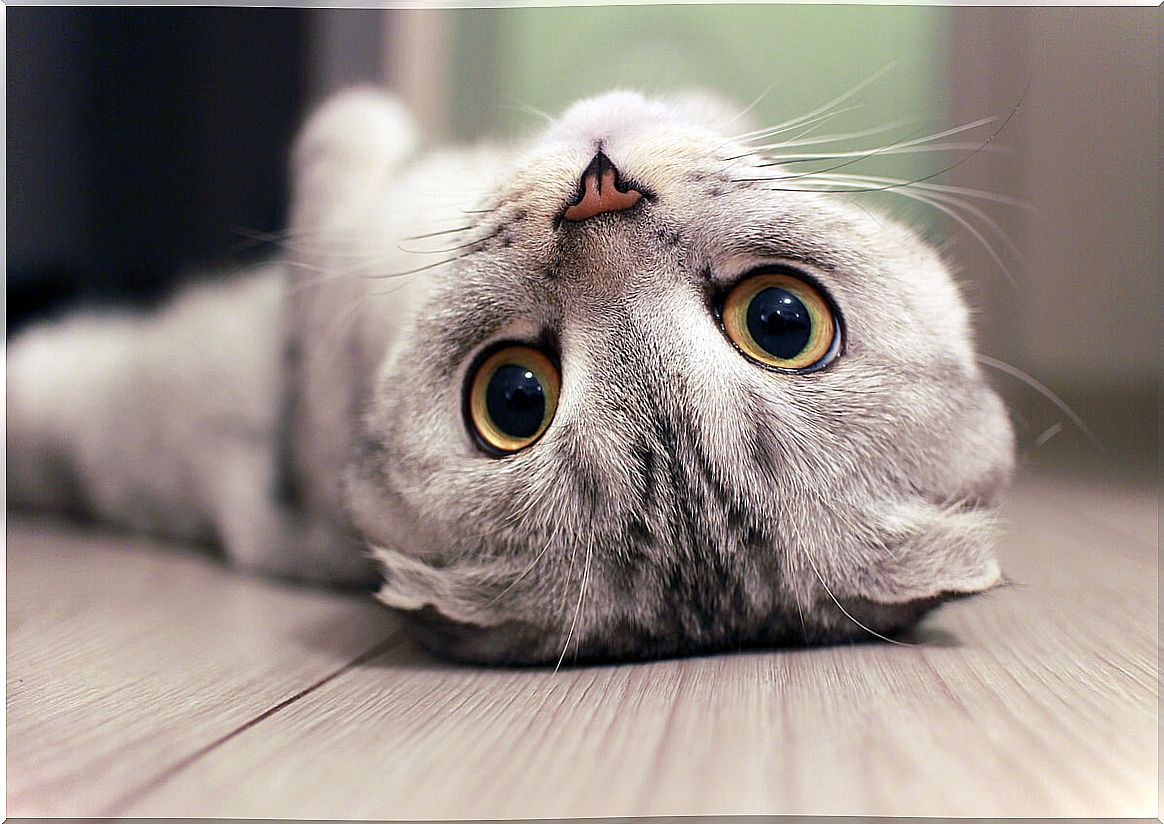What Are Cats Afraid Of?

Cats are curious but cautious animals that are fearful and curious at the same time about new objects and situations, but is it bad to be afraid? At its core, fear is a survival mechanism. With it, living beings prepare for possible dangers, we show physiological responses and different behavioral patterns.
In nature, fear is a useful strategy for animals that have to survive in a hostile environment. However, at home these fears can become an inconvenience in the daily life of the pet.
What are cats afraid of?
For domestic felines, routine is very important, as they adjust themselves to eating, playing or resting times. When something abruptly interrupts their routine or there is a major change in the home, cats can experience stress.
If we talk about fears, there are usually certain situations and objects that most cats fear or detest. These are some of the most common, but each animal is a world and there can be many differences between individuals. Go for it.
1. Unknown people
Many cats flee to their hiding place when someone new they don’t know breaks into the house. This fear may lie in the mismanagement of domestic cats to face new situations.
Over time, if the unknown person becomes more common at home, the cat may stop hiding and even be seen or hover near this person. In any case, the first observations will always be from a distance.
2. New object in the home
Cats may not easily accept that you put a new object in the house, especially if it is in plain sight and easily accessible. A frequent behavior is that they try to dump this new object because, as we have said, cats are animals of habit.

3. Get into the carrier
Going to the vet or going on a car trip can be challenging for cat guardians. Even if the trip and visit is short, this can put a lot of physical and psychological stress on them.
The most recommended carriers for cats are rigid and removable in an upper and a lower part, with front and upper access. This allows for an easier vet examination and the cat feels less exposed upon arrival.
Getting a cat used to using a carrier is not a quick process, as it requires a lot of patience and short training sessions. However, this is necessary to avoid long-term problems with the animal.
You can start by placing the carrier in one part of the house and wait for the cat to use it as a place of refuge or rest, always with positive reinforcement. Once you get this, which is not easy, you can get used to staying inside by closing the door.
4. Let them be picked up
Invading a cat’s personal space is not recommended, since felines fear — or rather hate — feeling trapped in their arms when they do not want to receive affection. This does not mean that they are not affectionate animals, you simply have to learn to distinguish when they are receptive to cuddles, games or attention from you.
5. Loud noises
Cats are also afraid of loud noises produced, for example, by rockets or firecrackers. This fear can provoke exaggerated responses in both canines and felines.
6. The water?
It is always known that cats are not great friends of water. Although there may be some cats that do not have a problem with getting wet, the most normal thing is that if a cat notices water falling nearby, it runs in the opposite direction.
Cats’ aversion to water can be traced back to their natural history. In general, cats have lived in desert areas far from bodies of water, so they have not had many opportunities to come into extensive contact with it.
7. Do cats fear cucumbers?
A few years ago, hundreds of videos of cats were startled when they saw this vegetable suddenly. The explanation is more interesting than it might appear at first.
Several theories have been given since then: the association of the cucumber with a predator such as the snake, the fear of the unknown or the sudden surprise that it is to see something where there was nothing before are the most popular hypotheses.

In any case, we advise you not to scare your cat in this way, as creating fear is not something positive for the animal or your relationship with it. Fear is an adaptive response in the natural environment, but it continually puts unhealthy stress on your pet.









